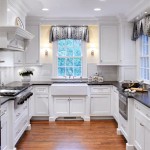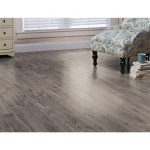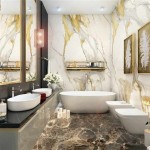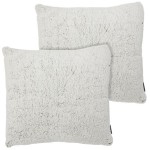Elephant Statues: A Comprehensive Guide to Room Decor
Elephant statues have long been a popular choice for home decor, transcending cultural boundaries and finding favor across a wide range of interior design styles. Their enduring appeal stems from a combination of aesthetic beauty, symbolic significance, and perceived positive energy. This article aims to provide a comprehensive overview of incorporating elephant statues into room decor, exploring the associated symbolism, available materials, diverse styles, placement considerations, and their potential impact on the overall ambiance of a space.
Symbolism and Cultural Significance
The elephant holds a prominent position in various cultures and belief systems, often representing qualities such as wisdom, strength, loyalty, good fortune, and longevity. In Hinduism, the elephant-headed god Ganesha is revered as the remover of obstacles and the patron of arts and sciences. This association with overcoming challenges contributes to the positive connotations linked to elephant imagery. In Buddhism, the white elephant is considered a sacred animal, symbolizing purity, mental strength, and the birth of the Buddha. These deeply rooted cultural connections imbue elephant statues with a significance that extends beyond mere decoration.
Beyond religious contexts, elephants are also admired for their intelligence, memory, and social bonds. Their matriarchal social structure, where herds are led by older and wiser females, reinforces the association with wisdom and leadership. The elephant's perceived ability to remember past events and navigate complex environments further contributes to its symbolic representation of knowledge and experience. The depiction of elephants in art and literature across various cultures showcases their adaptability and widespread recognition as symbols of positive attributes.
The direction in which an elephant statue's trunk is facing is also often considered significant. An upward-facing trunk is generally believed to symbolize good luck, prosperity, and the showering of blessings. Conversely, a downward-facing trunk can represent stability, grounding, and the conservation of energy. While these interpretations vary depending on cultural beliefs and personal preferences, they highlight the nuanced symbolism associated with even seemingly subtle details in elephant statue design.
Materials and Styles
Elephant statues are crafted from a diverse range of materials, each offering a unique aesthetic and contributing to the overall style of the piece. The choice of material significantly impacts the statue's durability, weight, and visual appeal. Common materials include ceramic, wood, metal, resin, stone, and glass.
Ceramic elephant statues are popular for their versatility and affordability. They can be molded into intricate designs and finished with a variety of glazes, ranging from glossy and vibrant to matte and understated. Wooden elephant statues offer a natural and organic aesthetic, with different types of wood lending distinct textures and colors. Wood carvings can range from simple and minimalist to elaborate and highly detailed.
Metal elephant statues, often made from brass, bronze, or iron, exude a sense of strength and durability. Their metallic sheen adds a touch of elegance and sophistication to any space. Resin elephant statues provide a lightweight and cost-effective alternative to other materials, while still allowing for detailed designs and realistic finishes. Stone elephant statues, carved from materials such as marble, granite, or soapstone, possess a timeless appeal and a sense of permanence. Glass elephant statues, though more delicate, can add a touch of artistic flair and light-catching brilliance to a room.
In terms of style, elephant statues can range from traditional and realistic depictions to modern and abstract interpretations. Traditional elephant statues often feature intricate carvings and lifelike details, showcasing the animal's anatomy and majestic presence. Modern elephant statues may incorporate geometric shapes, simplified forms, and unconventional materials, offering a more contemporary aesthetic. The choice of style ultimately depends on the individual's personal taste and the overall design theme of the room.
Placement and Decor Integration
The placement of elephant statues within a room is crucial for maximizing their aesthetic impact and leveraging their perceived symbolic benefits. Considerations should include the size and scale of the statue, the existing decor, the intended focal point, and the desired energy within the space.
Larger elephant statues can serve as statement pieces, commanding attention and creating a focal point in a room. These statues are often placed in entryways, living rooms, or even outdoor spaces. Smaller elephant statues can be grouped together to create a visually appealing display on shelves, mantels, or side tables. The arrangement of multiple statues can add depth and dimension to the decor scheme, further highlighting the elephant motif.
The direction the elephant statue is facing can also influence its placement. According to some Feng Shui principles, placing an elephant statue facing the entrance of a home is believed to bring good luck and prosperity. Conversely, placing an elephant statue facing inward is thought to symbolize protection and the retention of positive energy within the home. It is imperative to note that these beliefs are subjective, and the placement should ultimately resonate with the individual's personal preferences and beliefs.
When integrating elephant statues into existing decor, it is important to consider the color palette, textures, and overall style of the room. A neutral-toned room can benefit from a pop of color provided by a brightly glazed ceramic elephant statue. A room with natural wood accents can be complemented by a wooden elephant carving. A modern and minimalist space can be enhanced by a sleek metal elephant statue. The key is to choose an elephant statue that complements the existing elements of the room and enhances the overall aesthetic.
Lighting can also play a significant role in highlighting the beauty of elephant statues. Strategic placement of spotlights or ambient lighting can accentuate the statue's textures, curves, and overall form. The interplay of light and shadow can create a dramatic effect, drawing attention to the statue and making it a more prominent feature of the room's decor.
Finally, consider the impact the statue has on the overall energy of the space. If the intention is to create a sense of calm and serenity, choose statues in softer colors and materials, and place them in quiet corners of the room. If the goal is to energize the space and promote creativity, opt for statues with bolder colors and dynamic poses, and place them in areas where activity and interaction occur.

Wooden Elephant Animal Figurines Statue Home Decor Housewarming Gift Office Tabletop Kids Room

Elephant Statues Animal Figurine Decorative Accent Sculpture With Trunk Up For Home Office Decor Crafts Gifts Aureate Com

Elephant Statue For House Warming Parties

Lucky Elephant Statue 7 Elegant Figurine For Home Decor Unique And

Leekung Elephant Statues Home Decor Accents Figurines With Trunk Up For Shelf Bookshelf Table Living Room Office Woman Mother S Day Mom Birthday Gifts Set Of 2 Brown

Brown 15 In X 12 Plastic Elephant Statue For Office Desktop Room Decor Shelf Table Living Nightstand

Elephant Statue For Home Decorations Figurines With Trunk Up

Modern Oriental Elephant Home Decor Sculpture Onshelf

Elephant Figurines Modern Style Resin Decor For Home Office Desk Accessories And Living Room Decoration Perfect Gift

Brown 15 In X 12 Plastic Elephant Statue For Office Desktop Room Decor Shelf Table Living Nightstand
Related Posts







